A transaction means buying or selling one individual specimen between one person and another person on a single date or buying or selling multiple specimens derived from the same individual animal between one person and another person on a single date.
Code of practice
- People registered under the Protected Animal Specimens Code of Practice are authorised to make a maximum of 5 transactions in a 12-month period. If you buy and sell specimens, you must update the specimen information for those specimens by your reporting date (12-month anniversary of your registration to the code).
- There is no limit on the number of protected animal specimens a person can exchange or gift, but if the specimens in your possession have changed, you must update those changes by your reporting date (12-month anniversary of your registration to the code). The deadline to update specimen information is the anniversary of the date you first registered your details under this code. For example, if you register your details on 25 June 2023, you must update the species information for the specimens you buy and sell by 25 June every year.
Taxidermy licence holders
- Under your biodiversity conservation licence, you are now authorised to sell protected animal specimens that you have taxidermied or possess to someone with the appropriate authority to hold preserved protected animal specimens, for example, those registered under the code or an appropriate licence holder.
- Your biodiversity conservation licence authorises you to make a maximum of 5 transactions per 12-month period.
- Taxidermists may continue to advertise and charge for their taxidermy services.
- Should you participate in the buying or selling of protected specimens, you will need to report some information as a part of your licence conditions.
- Refer to the conditions of your biodiversity conservation licence for further information about your reporting requirements. Licence fees apply.
Why is there a limit on buying and selling specimens?
The opportunity to buy and sell protected animal specimens was previously not permitted under a biodiversity conservation licence. Placing a limit on transactions will ensure the department monitors this newly permitted activity in consideration of potential commercial and conservation risks.
Click through the series of infographics below to understand different transaction scenarios and what might apply to you.

Figure 1: Selling a specimen or multiple specimens from the same animal to one buyer in a day counts as 1 transaction. Example: Alex sells a taxidermied wombat to Sam, making 1 transaction. Credit: DCCEEW
If you sell a specimen or multiple specimens from the same individual animal to one buyer on a given day, that is 1 transaction. In this example: On one day, Alex (Seller) has a wombat taxidermied and sold to Sam (Buyer). Alex has made one transaction.
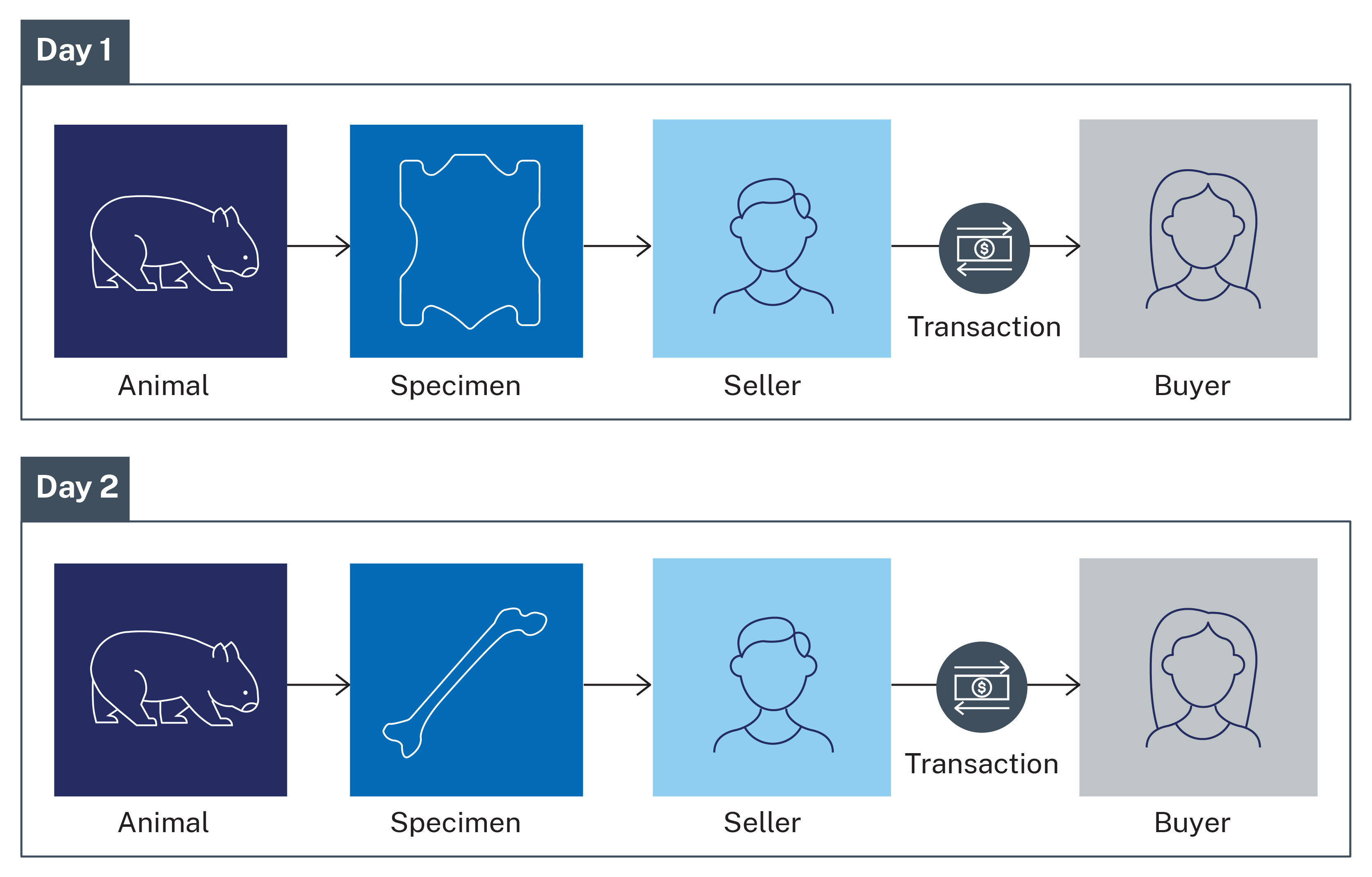
Figure 2: Selling specimens from the same animal to the same buyer on different days counts as 2 transactions. Example: Jo sells a preserved wombat skin to Kieran one day, and a bone from the same wombat the next day. Credit: DCCEEW
If you sell specimens from the same individual animal to the same buyer on 2 different days, that is 2 transactions. In this example: Jo (Seller) sells the preserved skin from one wombat to Kieran (Buyer), and the next day sells a bone from the same wombat to Kieran (Buyer). Jo has made 2 transactions.
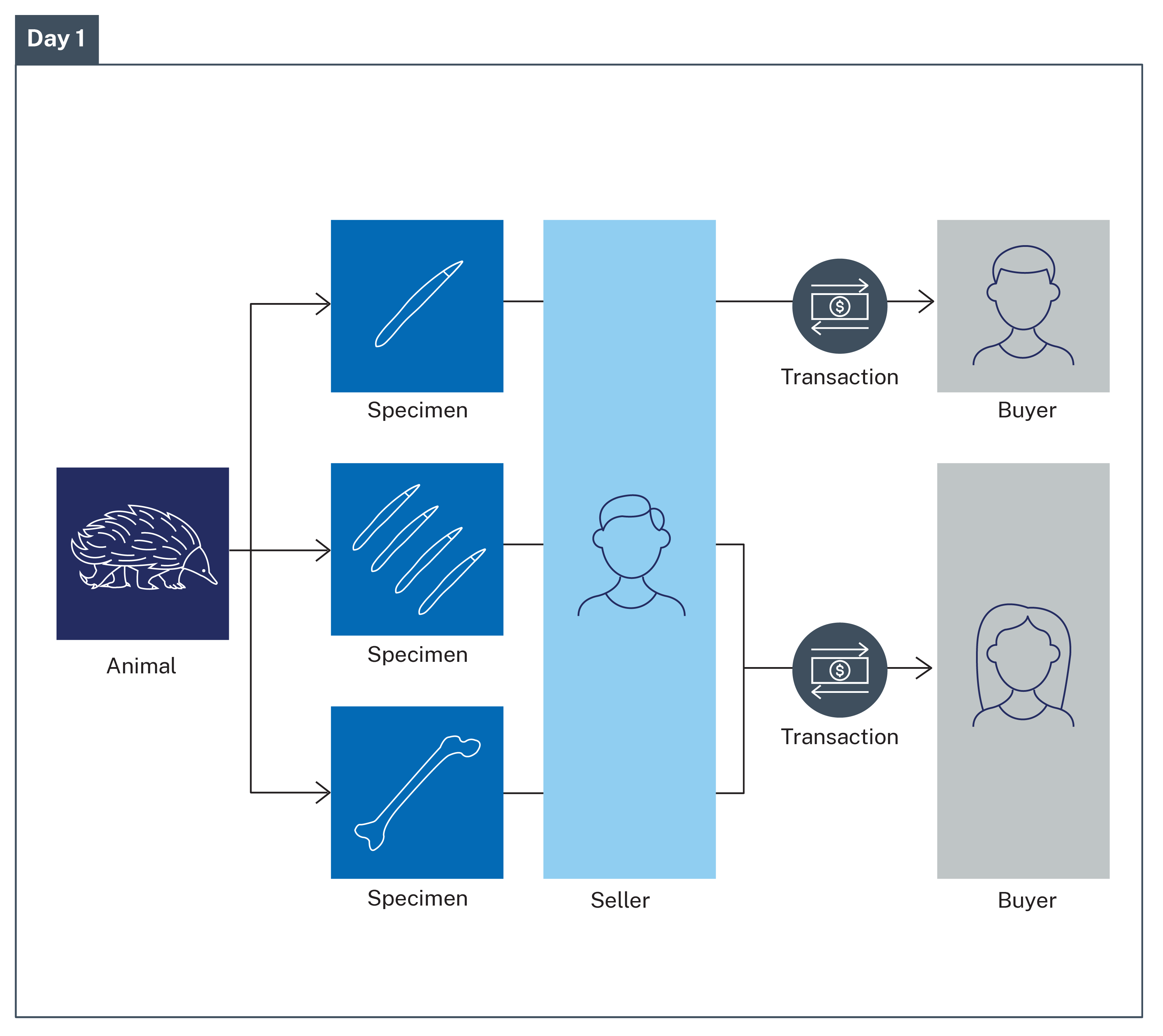
Figure 3: Selling specimens from one animal to 2 buyers in a day counts as 2 transactions. Example: Roger sells one echidna quill to Chris and a bone plus 4 quills to Mary. Credit: DCCEEW
If you sell specimens from one individual animal to 2 different buyers on a given day, that is 2 transactions. In this example: On one day, Roger (Seller) sells one quill from an echidna to the first buyer, Chris, and sells a bone and 4 quills from the same echidna to the second buyer, Mary. Roger has made 2 transactions.
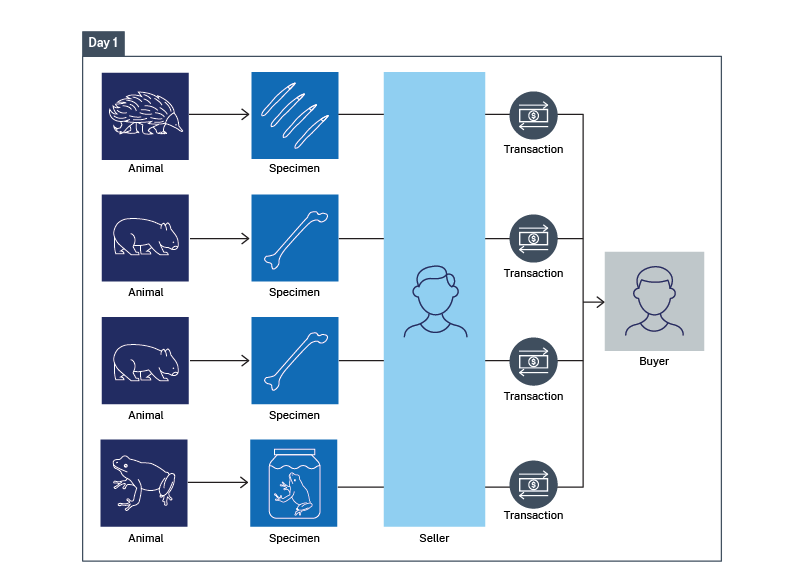
Figure 4: Selling specimens from 4 different animals to one buyer in a day counts as 4 transactions. Example: David sells quills from one echidna, bones from 2 wombats, and a preserved frog to Eric. Credit: DCCEEW
If you sell specimens from 4 different individual animals to one buyer on a given day, that is 4 transactions. In this example: David (Seller) sells the quills of one echidna, the bones of 2 different wombats, and a preserved frog to Eric (Buyer). David has made 4 transactions.
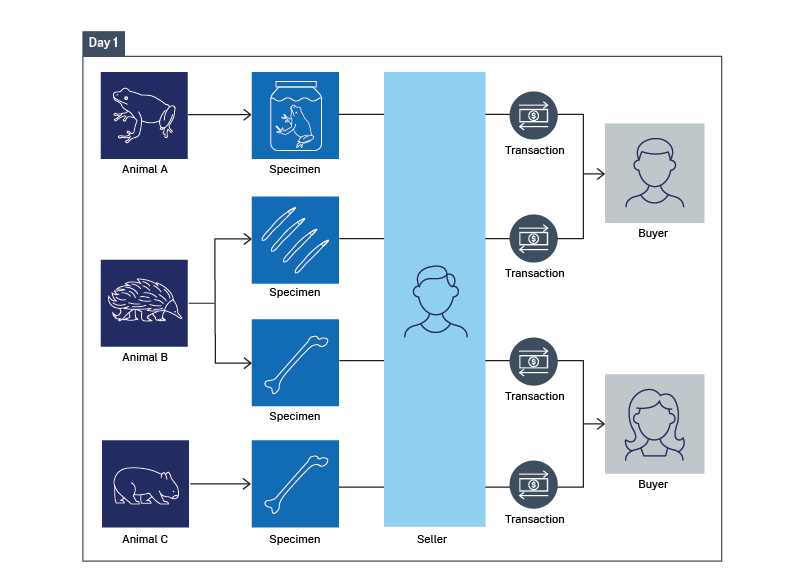
Figure 5: Selling specimens from Animals A and B to Buyer 1, and from B and C to Buyer 2 results in 4 transactions—2 per buyer. Example: Terry sells a frog and echidna quills to Kyle, and wombat and echidna bones to Gloria. Credit: DCCEEW
If you sell specimens from Animal A and Animal B to Buyer 1, and sell specimens from Animal B and Animal C to Buyer 2 on a given day, you have made 4 transactions and the buyers have each made 2 transactions. In this example: Terry (Seller) sells a preserved frog and 4 quills from an echidna to Kyle (Buyer) and a bone from a wombat and a bone from the same echidna to Gloria (Buyer). Terry has made 4 transactions. Kyle and Gloria have each made 2 transactions.
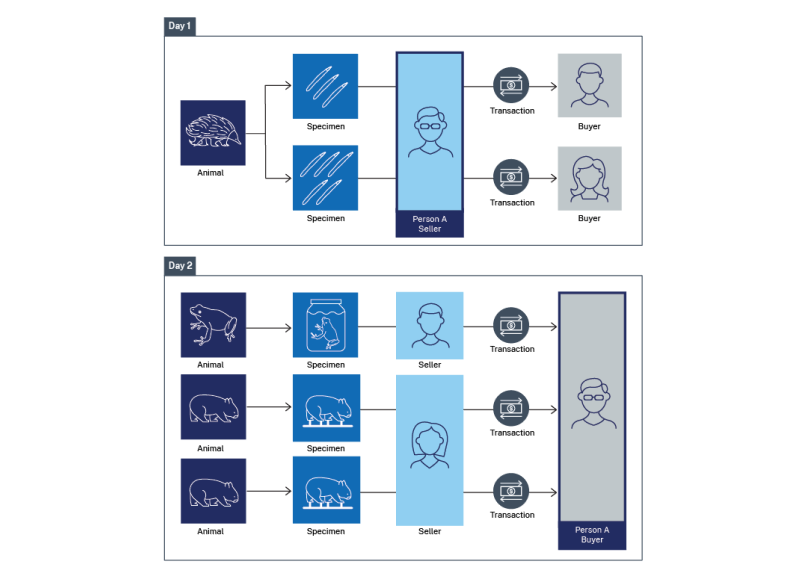
Figure 6: Selling 3 echidna quills to one buyer and 5 to another in a day counts as 2 transactions. The next day, buying a frog and 2 wombats from different sellers counts as 3 transactions, totaling 5 in 12 months. Credit: DCCEEW
On one day, Person A (Seller) sells 3 quills from an individual echidna to one buyer and 5 quills from the same echidna to another buyer, that is 2 transactions. The next day Person A (Buyer) buys a frog in a jar from one seller, and from another seller they buy 2 taxidermied wombats, this is 3 transactions. Person A has made a total of 5 Transactions within a 12-month period. To comply with the code of practice, Person A cannot participate in anymore transactions (buying or selling) until the next anniversary date of their registration to the code.
Understanding transactions quiz
For those who would like to test their understanding of transaction limits, try the quiz below. This is an educational quiz to assist in your understanding of this new activity. Your results are anonymous.